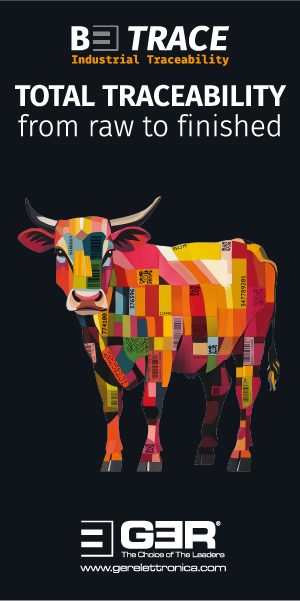Market Intelligence - 17.05.22
Macroeconomics
Another two weeks have passed, but nothing has fundamentally changed with the dominant political and economic issues. These are so important and so crucial for almost everyone that they almost completely overshadow everything else.
The Russian invasion of Ukraine continues to occupy Europe first and foremost. Security and peace are threatened and the closer one lives to the events, the more significant they are perceived to be. Of course, this is especially true for the Baltic states, Poland and Moldova, but also previously neutral states such as Sweden and Finland are extremely concerned about their security and sovereignty. As a result, they are very likely to join NATO and thus give up their status of neutrality and the status of buffer between Russia and the West. The war in Ukraine is developing more and more into what experts had already expected. After the heroic defence against the first wave of the Russian attack, it is now developing more and more into a war of attrition, which, regrettably, may keep us busy for quite some time. If this war has achieved only one thing so far, it is that the Western, free, democratic states are demonstrating a unity never seen before. May the incredible sacrifices made to date in defence of freedom and sovereignty not be in vain.
China’s policy to contain the covid-19 pandemic also continues to keep the world on tenterhooks. People in many major cities in China continue to be confined, and economic and social life remains reduced. This is disrupting production and supply chains internationally and domestically. There are still a large number of ships waiting for clearance, especially outside the port of Shanghai, and the circulation of shipping capacity and containers will continue to be significantly affected for a long time to come.
Individual industries are already analysing the significant impact on their businesses and production. What is missing, however, and what we have not yet been able to find anywhere, is a modelling of the overall situation and the development that will result from it. How long and with what consequences disruption to production and the supply chain lasts should be possible to show through computer modelling. If we consider that, on the one hand, the supply of food for the near future could already be restricted because of the war, added disruption resulting from the situation in China could affect many other products.
At the moment, all labour markets are intact and unemployment is low, but what would happen if there were severe international shortages of components, consumer goods and necessary services? You can read about the current problems in every newspaper and news programme, but nobody really wants to deal with the possible and very real consequences of the situation. Assessment is particularly difficult due to the fact that it is not at all foreseeable under what conditions and when the Chinese government might be willing to review its policies. The current decline in the number of infections in Shanghai at least gives some hope.
Inflation and the resulting decisions by national banks are also the subject of daily discussion. Inflation has now risen to over 8% in the US and 7% in Europe. Even the European Central Bank seems to have awoken from its deep sleep and can no longer escape the necessity of interest rate hikes. This may not please some governments in Europe, but by now everyone must have understood that, although it may have very unpleasant consequences, this is nevertheless unavoidable. Regarding inflation in emerging markets, we may take Turkey as an example; the official figure there is already above 50% but how much this is affecting households in terms of food and energy is difficult to estimate.
The financial markets are still reacting moderately to the wave of problems coming to the world economy. Share prices have fallen significantly from their highs, and technology stocks have suffered considerable losses in some cases, but overall a crash has, fortunately, failed to materialise so far. Corporate profits, which have been very positive despite the difficulties of the last two years, are still supporting share prices. However, one has to look very carefully. Should corporate profits come under pressure due to the circumstances in the current year, one should take a very close look at one’s stock portfolio again.
Energy prices remain at an extremely high level and the boycotts are slowly beginning to take effect. More and more people are trying to do without Russian energy supplies and at the same time Russia is also playing and threatening with the end of energy supplies. With great commitment, all options are being examined and considered in order to free Western Europe from its dependence on Russian gas and oil. Oil prices remain in their range between $100 and $110.
Gold cannot live up to its status as a hedge against inflation and continues to fall to levels around $1,800.00. Industrial metals suffer from the demand uncertainties due to the supply chain problem and the situation in China and fall in their prices.
The US dollar benefitted greatly from the diverging interest rate development and from the uncertainties in Europe and rose significantly. In the meantime, a further rise to parity would not be unlikely.
Leather Pipeline
When analysing and assessing the situation in the leather industry, one probably first has to start by reviewing the current situation in Ukraine and China and then looking at what may have happened without these special circumstances.
If we go back a few months, we were already discussing at that time whether leather as a material in use in the automotive, shoe, clothing and furniture sectors could become better established again. It was already very clear before the current difficulties arose that the use of leather was barely enough to absorb the accumulation of raw material. It was very quickly forgotten that a quite considerable amount of raw material was already no longer being processed by the leather industry.
The supply of raw hides, admittedly hides of rather low value, was already declining. Large packer companies, which were well aware of this situation, reacted to it and created other uses, for example in the protein and collagen sector.
This situation was partly caused by attacks leather from campaign groups, which have faded somewhat for the moment.
However, we only need go back a few months to remember how leather was being denigrated in the media and how major brands were announcing the end of the use of leather. The focus of public interest may have changed somewhat at the moment owing to the special circumstances of the current time, but China and Ukraine are by no means the sole reasons for the current difficulties in leather. They have merely intensified the situation.
All these difficulties do not mean the end of the everything; life will go on. Raw hides still have a market. The demand for split, collagen and gelatine will also help avoid the destruction, incineration or simple disposal of hides from becoming more widespread. This does not mean that we do not have to adapt to the price trends to find a healthy balance between supply and demand again.
At the moment, we find ourselves in a very difficult environment. Decisions on the use of materials for the next seasons in the consumer goods markets have not yet been made. It is also not yet clear what influence a possible deglobalisation of production will have. Nor is it clear yet at what prices synthetic alternatives will be on offer in the near future and how secure those supply chains will be. All of this is up for discussion and these issues go far beyond the classic and recurring argument about the ‘right price’ between producers of the raw material and processors. Pricing still takes place according to the classic emotion of the day rather than a rational process based on analysis of the situation. Despite all the assurances of meat producers, the price of hides still plays a very subordinate role today. It is almost impossible to monitor packer firms’ success in selling hides. They tend to look only at the amount of money coming in and how that compares with what their direct competitors are doing; there is no analysis of whether revenue over the entire price cycle could possibly have been improved by acting differently. The reverse is of course also true on the buyer side.
It probably makes sense to present the current facts again.
We are now at the beginning of the weaker leather production period. This usually lasts into September. The pandemic policy in China is at the moment considerably inhibiting production in the largest production market and one of the largest consumer markets. In addition to the immediate and short-term effects on production and consumption, the question is increasingly being asked every day whether the effects in China could possibly be longer-term. This includes question-marks over when production in China can return to normal levels and, most importantly, whether the Chinese consumer will return to normal purchasing behaviour.
There is a lot of talk at the moment about the logistics chains and everyone is talking about the blocked transport capacities at the port of Shanghai and elsewhere, but the longer-term effects that we already saw a few months ago on the other side of the Pacific, in the US, cannot be assessed at the moment. There is much speculation, and logistics experts make a good case that it could take several months to restore an orderly flow of supplies. The burden this will place on businesses is impossible to assess today.
The Russian invasion of Ukraine and the resulting price increases for food and energy will have a significant impact on consumer behaviour and spending. What this will look like cannot be reliably assessed today either. European retailers report that shoppers are already buying less and at lower prices. The average amount at the supermarket checkout has fallen by up to 7% in recent weeks. Energy and food prices are putting strain on family budgets. Whichever way you look at it, if this situation does not change in the short term, and nobody expects it to, middle and low income consumers will have rather 10%-20% less disposable income available. More people across the world are in these two income brackets than in any other.
The production of cattle hides will not decrease significantly worldwide in 2022. Even if there are clear negative signs for the kill in individual countries, especially in Europe, this will be offset to a large extent by stable and increasing slaughter in other regions.
Rapidly rising costs for energy and chemicals, but also for wages, combined with rising interest rates, are putting a considerable strain on the calculations and cash flow of leather manufacturers. According to experience, lower sales in the coming months could very quickly put a negative strain on liquidity in the leather industry. The risk that leather manufacturers might have to close down is currently increasing significantly. For now, falling raw material prices are helping, but this is not a safety net that can protect in the long term. Only an improved order situation would do that.
According to all the information we can gather, we must assume that stock volumes of raw material are currently rising. Without speculative buying, there will be no increase in demand in the short term.
All this creates an environment of high uncertainty for the leather industry and, in spring, it is not easy to see a quick resolution of the situation.
The situation will affect different markets to different degrees. It is up to each individual market participant to analyse the specific situation there and draw the appropriate conclusions for action in the coming months.
The split market is in a special situation at the moment. On the one hand, it is still benefiting from the price structure in the last quarter of 2021, when prices for cattle hides rose and reached quite high levels again relatively quickly. This stimulated demand for split leather and no one could have foreseen at the time that, for a variety of reasons, production in tanneries would decline significantly, as it has since February, and with it the supply of split.
As if that were not enough, the demand for collagen and gelatine is increasing and thus a total demand for split has developed that cannot be met by the supply. Viewed soberly, if raw material could be procured almost without delay, there would already be a large number of cattle hides today that would profitable solely thanks to the demand for split. Of course, the delivery obligations for split leather will also expire in the next few months, but we are nevertheless convinced that this offers hope for future sales of some types of hide at the right price.
In sheepskins and lambskins we are currently confronted with certain special situations. In Europe, the new season for lambskins is starting and South Africa, an important supplier of high-quality lambskins, has been hampered by an outbreak of foot and mouth disease. Apart from that, the general market situation has not changed much and the overall supply of sheepskins is still significantly higher than the demand. This means that in many regions of the world the skins and their proceeds still do not cover processing and transportation costs. Alternative uses, such as those we have described for cattle hides, are simply not available on the scale needed to carry out economically viable collection and processing everywhere.
Our conclusions for the near future are already clearly defined. However, since the market often does not orient itself to the facts, we cannot assume with certainty that the logical thing will happen right away. Nevertheless, without a renaissance for leather as a material, there will be no fundamental improvement. At the moment, the short-term pressures are simply too strong for the situation to improve significantly by the end of the summer. Hope is always allowed, of course, and sometimes miracles have happened. However, from a strictly rational point of view, we still see inevitable price adjustments coming, which will merely turn out differently in different regions and for different product groups.
Basically, the better the quality, the smaller the problem.












